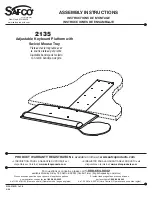
P a g e
|
5
ENERGIZER
BATTERY
MANUFACTURING
VERSION
1.2
Figure
2:
Runtime
for
Equivalent
Volume
AAAA
Batteries
in
50
mW
Devices
0
10
20
30
40
50
AAAA Alkaline
Lithium Ion
ZAP PP355
12
14
38
The
high
energy
density
of
Zinc
Air
is
made
possible
by
using
a
thin
air
electrode
where
the
cathode
reaction
takes
place
and
by
using
atmospheric
oxygen
as
the
cathode
reactant.
The
result
is
greater
internal
volume
for
zinc,
the
active
anode
material.
More
zinc
translates
into
longer
runtime
in
similar
overall
volume.
Figure
3
demonstrates
the
higher
energy
density
of
Zinc
Air
compared
to
other
consumer
battery
systems.
The
chart
on
the
left
displays
volumetric
energy
density
in
units
of
Wh/L,
and
the
chart
on
the
right
shows
gravimetric
energy
density
in
units
of
Wh/kg
.
This
data
is
based
on
the
volume
of
a
AA
sized
battery
for
all
systems
and
a
continuous
50mA
current
drain
to
a
0.9
volt
cutoff.
Figure
3:
Comparison
of
Zinc
Air
versus
Other
Battery
Technologies
156
450
565
396
371
522
343
890
0
100
200
300
400
500
600
700
800
900
1000
Carbon
Zinc
Alkaline
Lithium
Li
Ion
Lithium
Ion
Polymer
Lithium
MnO2
NiMH
Zinc
Air
En
er
gy
De
ns
it
y
(W
h
/L
)
87
151
307
153
171
218
95
345
0
50
100
150
200
250
300
350
400
Carbon
Zinc
Alkaline
Lithium
Li
Ion
Lithium
Ion
Polymer
Lithium
MnO2
NiMH
Zinc
Air
Sp
ec
ific
En
e
rg
y
(Wh
/k
g)
Energizer
Zinc
Air
Prismatic
batteries
have
an
operating
voltage
similar
to
Alkaline,
which
is
between
1.10
and
1.30
volts
depending
on
the
drain
rate
of
the
device.
The
discharge
profile
however
is
relatively
flat
similar
to
rechargeable
Nickel
Metal
Hydride
batteries.
Figure
4
contains
examples
of
discharge
curves
for
Zinc
Air,
Alkaline,
Nickel
Metal
Hydride,
and
Lithium
Iron
Disulfide
batteries.
Even
though
the
Zinc
Air
PP355
battery
has
the
same
external
volume
as
the
AAAA
battery,
it
delivers
up
to
3X
the
runtime
at
a
50
mW
discharge.



































